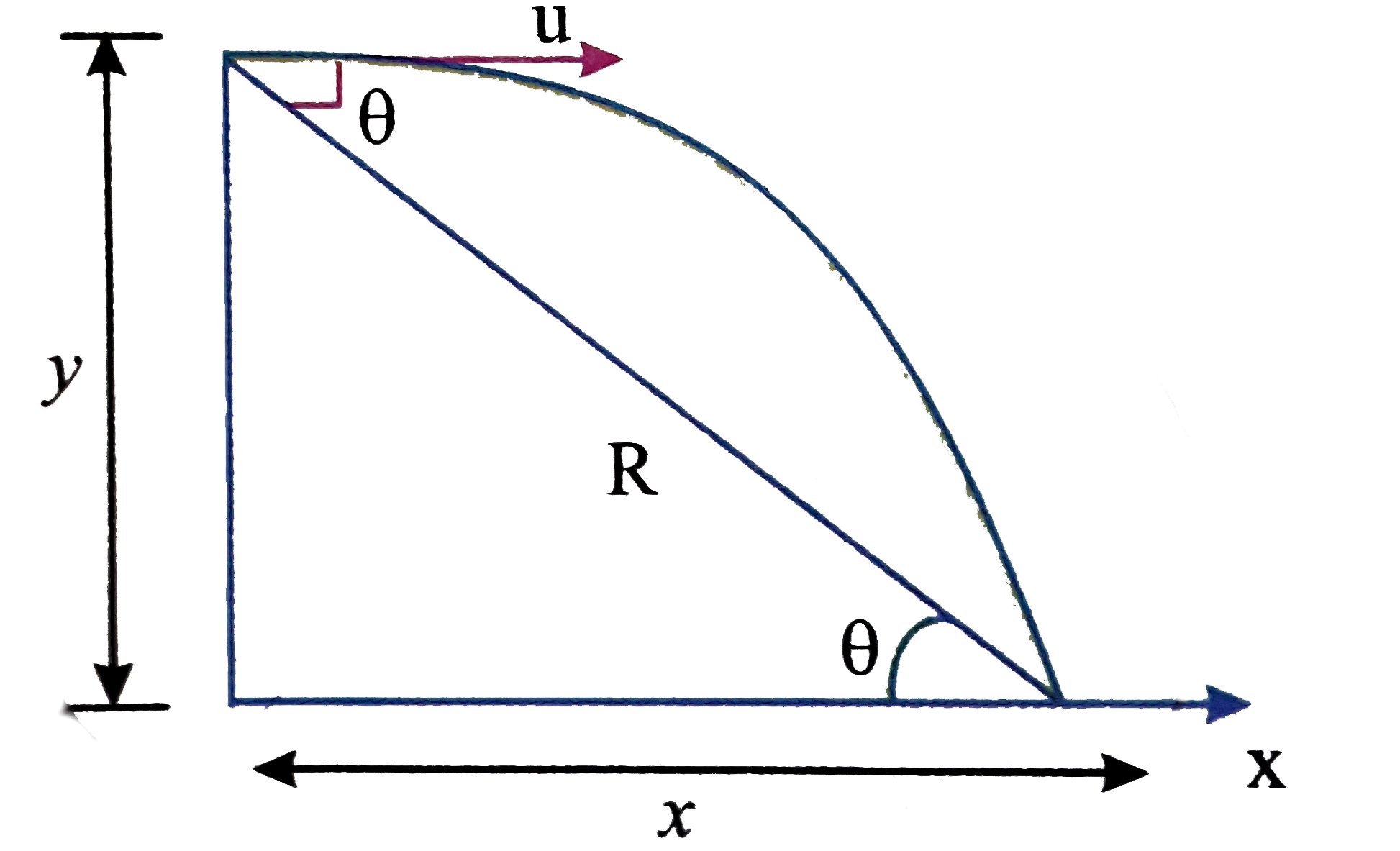A particle is projected along the line of greatest slope up a rough plane inclined at an angle of 45∘ with the horizontal. If the coefficient of friction is 1/2 . Their retardation is:
g2√2
g√2
3g2√2
g2
The correct Answer is:C
To find the retardation of a particle projected up a rough inclined plane at an angle of 45 degrees with a coefficient of friction of 1/2, we can follow these steps:
Step 1: Understand the Forces Acting on the Particle
When the particle is projected up the incline, the forces acting on it include:
- The gravitational force (weight) acting downwards, which can be resolved into two components:
- Perpendicular to the incline: mgcos(45∘)
- Parallel to the incline: mgsin(45∘)
- The normal force N acting perpendicular to the incline.
- The frictional force Ff acting down the incline, which opposes the motion.
Step 2: Calculate the Normal Force
The normal force N can be calculated using the component of the gravitational force acting perpendicular to the incline:
N=mgcos(45∘)=mg⋅1√2=mg√2
Step 3: Calculate the Frictional Force
The frictional force Ff can be calculated using the coefficient of friction μ:
Ff=μN=12⋅N=12⋅mg√2=mg2√2
Step 4: Calculate the Gravitational Force Component Along the Incline
The component of the gravitational force acting down the incline is:
Fg=mgsin(45∘)=mg⋅1√2=mg√2
Step 5: Determine the Net Force Acting on the Particle
The net force Fnet acting on the particle as it moves up the incline is given by the difference between the gravitational force component down the incline and the frictional force:
Fnet=Fg+Ff=mg√2+mg2√2
To combine these, we need a common denominator:
Fnet=mg√2+mg2√2=2mg2√2+mg2√2=3mg2√2
Step 6: Calculate the Retardation
The retardation a can be calculated using Newton's second law F=ma:
ma=3mg2√2⟹a=3g2√2
Final Answer
Thus, the retardation of the particle is:
a=3g2√2
When the particle is projected up the incline, the forces acting on it include:
- The gravitational force (weight) acting downwards, which can be resolved into two components:
- Perpendicular to the incline: mgcos(45∘)
- Parallel to the incline: mgsin(45∘)
- The normal force N acting perpendicular to the incline.
- The frictional force Ff acting down the incline, which opposes the motion.
The normal force N can be calculated using the component of the gravitational force acting perpendicular to the incline:
N=mgcos(45∘)=mg⋅1√2=mg√2
The frictional force Ff can be calculated using the coefficient of friction μ:
Ff=μN=12⋅N=12⋅mg√2=mg2√2
The component of the gravitational force acting down the incline is:
Fg=mgsin(45∘)=mg⋅1√2=mg√2
The net force Fnet acting on the particle as it moves up the incline is given by the difference between the gravitational force component down the incline and the frictional force:
Fnet=Fg+Ff=mg√2+mg2√2
To combine these, we need a common denominator:
Fnet=mg√2+mg2√2=2mg2√2+mg2√2=3mg2√2
The retardation a can be calculated using Newton's second law F=ma:
ma=3mg2√2⟹a=3g2√2
Thus, the retardation of the particle is:
a=3g2√2
Topper's Solved these Questions
- LAWS OF MOTIONBOOK - DC PANDEY ENGLISHCHAPTER - LAWS OF MOTIONEXERCISE - Match the columns
7 Videos
- LAWS OF MOTIONBOOK - DC PANDEY ENGLISHCHAPTER - LAWS OF MOTIONEXERCISE - Medical entrances gallery
39 Videos
- LAWS OF MOTIONBOOK - DC PANDEY ENGLISHCHAPTER - LAWS OF MOTIONEXERCISE - Check point 5.4
20 Videos
- KINEMATICS 1BOOK - DC PANDEY ENGLISHCHAPTER - KINEMATICS 1EXERCISE - INTEGER_TYPE
15 Videos
- LAWS OF THERMODYNAMICSBOOK - DC PANDEY ENGLISHCHAPTER - LAWS OF THERMODYNAMICSEXERCISE - Level 2 Subjective
18 Videos
Similar Questions
A brick of mass 2kg begins to slide down on a plane inclined at an angle of 45∘ with the horizontal. The force of friction will be
View SolutionA particle is projected horizontally with a speed u from the top of plane inclined at an angle θ with the horizontal. How far from the point of projection will the particle strike the plane ?

View Solution
Knowledge Check
A block of mass 3 kg rests on a rough inclined plane making an angle of 30∘. With the horizontal. The coefficient of static friction between the block and the plane is 0.7. The frictional force on the block is
A9.8 NB0.7×9.8×√3 NC9.8×√3 ND0.7×9.8 N
A ball is projected horizontally with a speed v from the top of the plane inclined at an angle 45∘ with the horizontal. How far from the point of projection will the ball strikes the plane?
View SolutionA block slides down an inclined plane that makes an angle θ with the horizontal. If the coefficient of kinetic friction is μ, find the acceleration of the block.
View SolutionA block is projected up along the line of greatest slope of an inclined plane of angle of inclination 0(<ϕ) where ϕ= angle of friction. Which of the following friction time graph is CORRECT ?
View SolutionAn object is thrown along a direction inclined at an angle of 45∘ with the horizontal direction. The horizontal range of the particle is equal to
View SolutionA block is pushed up a rough inclined plane of 45°. If the time of descent is twice the time of ascent, the coefficient of friction is
View SolutionA uniform disc of mass m and radius R is rolling up a rough inclined plane which makes an angle of 30∘ with the horizontal. If the coefficients of static and kinetic friction are each equal to μ and the only force acting are gravitational and frictional, then the magnitude of the frictional force acting on the disc is and its direction is .(write up or down) the inclined plane.
View SolutionA body of mass 5×10−3 kg is launched upon a rough inclined plane making an angle of 30∘ with the horizontal. Obtain the coefficient of friction between the body and the plane if the time of ascent is half of the time of descent.
View Solution
